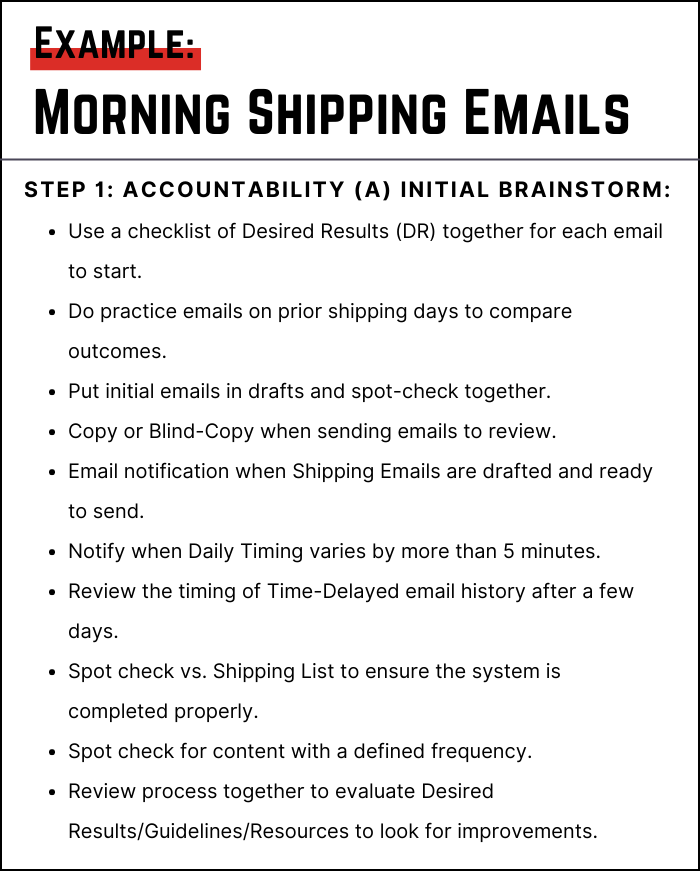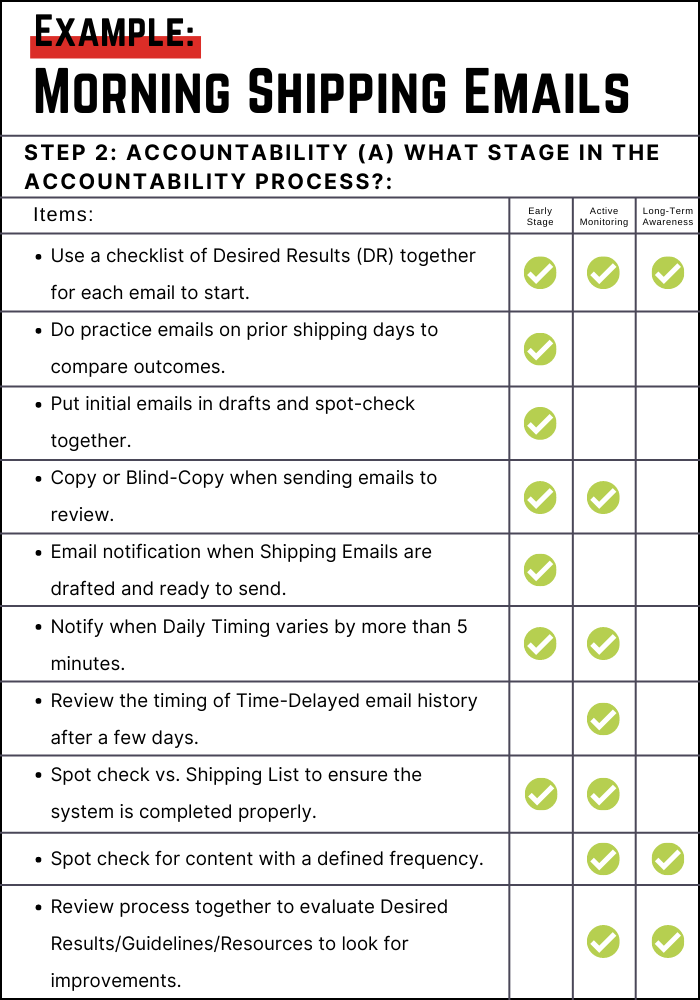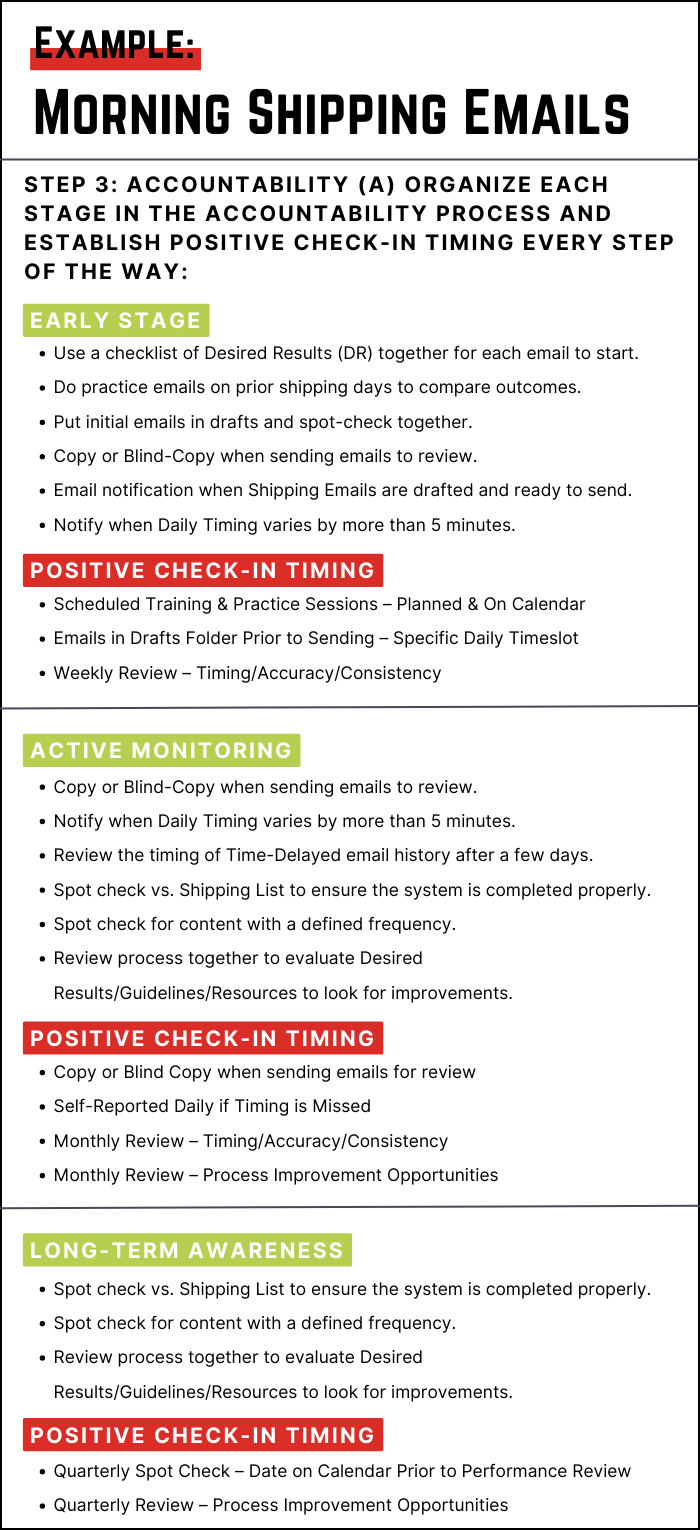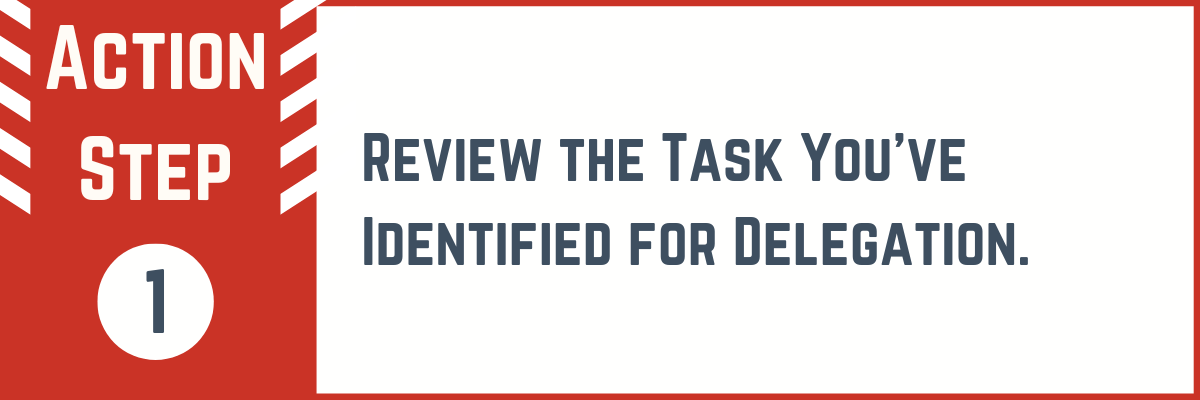How to Delegate with Confidence Series (Part 5 of 7)
You’re continuing to set things up to delegate an important item. You’ve identified the Desired Results (DR), the Guidelines (G), and the Resources (R) for the task. Next, you’ll need to establish the Accountability (A) practice that you’ll use to make sure things stay on track.
In 7 Habits of Highly Effective People, Stephen Covey outlines the DR GRAC Delegation Process that has proven to be both solid and practical to use. Employed all over the world, the successful methodology helps slow down and clarify delegating so that Win-Win situations are established as the work gets done.
In this installment of our How to Delegate with Confidence Series, we’ll discuss the fourth step of the framework: Accountability (A). Hopefully, in Steps 1-3 of the Series, you identified an item to delegate and have established your Desired Results (DR), your Guidelines (G), and the available Resources (R) for the task. The next step is often the biggest hurdle to successful delegation, identifying the Accountability (A) practice that will keep things on track to get the job done properly and without you having to worry or interfere with it along the way.
How Will You Know How Well It’s Going?
Accountability is a word that gets used often these days. Its meaning can be elusive, and it’s most often used in a negative context. Being Accountable is synonymous with being subject to punishment. My all-time favorite definition of Accountability comes from Steven Covey and within its simplicity is great depth: “How will we know and measure how well it’s going?”
When delegating, it’s best to think of Accountability for the delegation as a practice or system. It’s not a 1-shot deal. It starts with a clear expectation and then can evolve as the person receiving the delegation grows in experience, skill, and outcome. Despite being delegated, the outcome of the task is still ultimately the responsibility of the delegating person, but the execution of the task has been given to another.
Building a strong system of Accountability is crucial to the success of the task and the good feelings of everyone involved in the process. Since this is the spot where most delegation falters, it’s important that the Accountability process is firmly established and clearly communicated.
Accountability (A) – Step 1. Initial Brainstorm – “How will you know how well it’s going?”
Take a few minutes and list the ways you might be able to know how well the task is going. This list can vary dramatically depending on the task involved, but getting some initial thoughts down along the following lines would be helpful:
- Could it be as simple as showing you the outcome and reviewing the Desired Results (DR) together at a particular time to ensure proper completion?
- Would you need or want verification to know that the Guidelines (G) were maintained during the completion of the task?
- Would you need or want to know what Resources (R) were used to complete the task?
- Could a scorecard be established to track task outcomes and trends?
- Are there specific times, or internal/external triggers that could prompt review or periodic updates on the progress of the task?
- Is there as much flexibility within the Guidelines as possible, so that the Accountability is not subtly checking a particular method, but is actually verifying just the Desired Results (DR). Setting up the Accountability may result in adding Guidelines (G) if it becomes necessary.
- Is there potential flexibility in the Accountability (A) measures that could be offered as options to the person receiving the task? Establishing their preferences will enhance their sense of ownership and can make them feel better about the nature of the Accountability (A) experience.
- Know that there are three typical Stages of delegation: Early Stage, Active Monitoring, and Long-Term Awareness. The Accountability (A) measures will vary between these Stages.
Getting numerous options on the table will help organize the thought process and go a long way to ensuring that all details are covered satisfactorily.

Accountability (A) – Step 2. Determine the Stage in the Accountability Process. Evaluate Each Item – When will each be an option or required? Early Stage/Active Monitoring/Long Term Awareness/Other
Next, take the list you created and review it to determine the expected stage of the Accountability process it will fall into. Typically, when delegating, there are stages to the Accountability process:
- Early Stage – The person receiving the task is just learning and will need help. Extra checks, reviews, and training are likely needed. The person delegating the task can help clarify the Desired Results (DR) by comparing the initial outcomes with the established standard. Again, it’s important to resist delegating methods whenever possible. When methods must be delegated, they should be added to the Guidelines (G).
- Active Monitoring – The person receiving the task is competent to complete the task but provides consistent input to the person delegating to build confidence in both directions that the task will be performed as well, or better than it had been prior to delegating.
- Long-Term Awareness – Both people have extreme confidence that the task has been completely delegated. It’s still important to understand how “You will know how well it’s going.” Typically, this takes the form of a consistent, if infrequent, report or update that confirms the status quo is being maintained. The practice of reporting provides ongoing assurance to the delegating person that the task is still in good hands.

Accountability (A) – Step 3. Organize Each Stage in the Accountability Process and Establish Positive Check-In Timing Every Step of the Way
Next, you’ll organize your list into the Stages of Delegation so you can establish the initial Accountability Process. A review of the Desired Results (DR) should be part of each stage just to make sure nothing gets lost along the way.
By organizing your list into Stages, you’ll have a checklist to review for each Stage. At all points in the Accountability Process, it should be very clear when the next Accountability Check-In will be and what will be checked.
Organizing by Stages will effectively create a plan for communicating the Delegation and build in a clear Accountability process to ensure things stay on track.

Accountability (A) – Final Thoughts
This part of delegating is likely the most crucial. A well-built Accountability (A) process provides the structure behind the delegation. The positive check-in timing ensures that there will be specific follow-up so “we know how well it’s going” all along the way.
In the Early Stage, there will be controlled and consistent oversight so that the task will be done well and both parties remain clear on expectations and outcomes for both the task and the check-in.
As the person being delegated, the task gets comfortable, the delegation shifts into the Active Monitoring Stage, where there is a consistent review of the task outcomes, but the requirement is significantly reduced. Reviews are still an opportunity to ensure proper performance, as well as to look for means of process improvement.
Finally, as the delegation enters the final stage, it can become part of a standard performance review process among many other tasks being performed. Reviews in this stage are more about process improvement but should still include a review of the Desired Results (DR), Guidelines (G), and Resources (R). This review will ensure that the delegation process is firmly established and can then be used to delegate the task again if required.
Here are your two Action Steps from this section:



